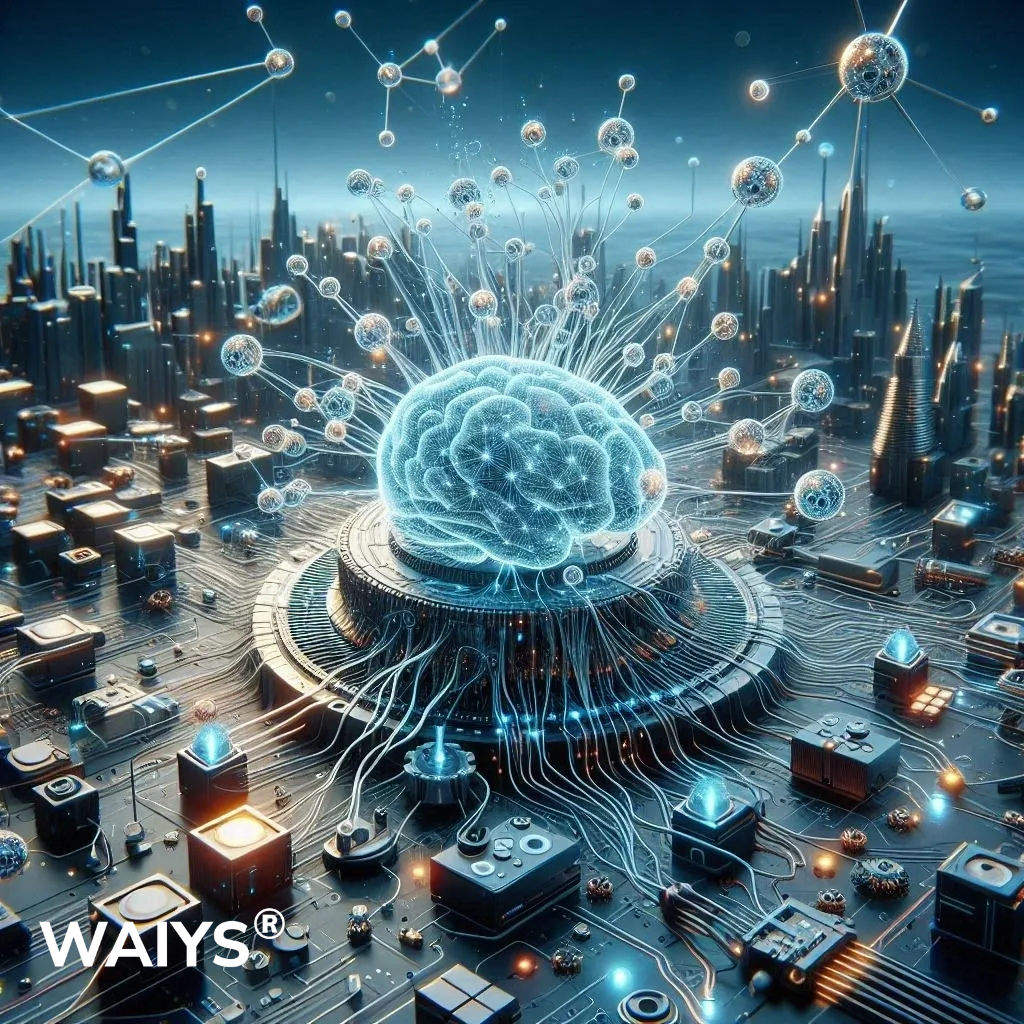Data Centers: The backbone of our digital world
are notorious for their unsustainable power consumption and carbon emissions. As demand for data processing grows, these environmental impacts worsen. Neuromorphic computing offers a promising solution by emulating the brain’s intelligence and efficiency, integrating processing and storage to drastically reduce energy use. This approach is crucial for sustainability across industries reliant on data-intensive operations.
Additionally, harnessing the real-time and low latency potential of neuromorphic computing will pave the way for autonomous systems to operate with unprecedented efficiency and responsiveness.
Spiking Neural Networks (SNNs) represent a fascinating frontier in artificial intelligence and computational neuroscience. By mimicking the brain’s way of processing information, SNNs handle spatiotemporal data more efficiently than traditional artificial neural networks (ANNs), significantly optimizing energy use. However, the challenge remains in effectively training these networks to harness their full potential.
Understanding Spiking Neural Networks
Before diving into the learning algorithms, it’s essential to grasp what sets SNNs apart. Unlike ANNs, where neurons fire at each time step in a continuous manner, SNNs employ discrete events or ‘spikes’ to convey information. This spiking mechanism allows for more biologically plausible neural computation, which is pivotal for tasks involving temporal data, such as sensory processing and motor control.
Challenges in Training SNNs
Training SNNs is inherently more complex due to the discontinuous and event-driven nature of spikes. Traditional gradient-based methods used in ANNs do not translate directly to SNNs, necessitating the development of specialized learning algorithms. Let’s explore some of the prominent approaches:
Spike-Timing-Dependent Plasticity (STDP)
STDP is a biologically inspired learning rule that adjusts the synaptic strength based on the relative timing of spikes between pre- and post-synaptic neurons. If a presynaptic neuron fires shortly before a postsynaptic neuron, the connection is strengthened, and if it fires after, the connection is weakened. This timing-based approach allows the network to learn temporal patterns and is fundamental in understanding how biological neurons learn. Advantages include closely mimicking biological learning processes and being effective for unsupervised learning tasks, while challenges involve the need for precise spike timing, making the system sensitive to noise, and limited scalability to large networks.
Backpropagation Through Time (BPTT)
BPTT adapts the traditional backpropagation algorithm to handle the temporal dynamics of SNNs. It involves unrolling the network over time and applying gradient descent to minimize the error. This method bridges the gap between the biological realism of SNNs and the efficiency of gradient-based learning. The benefits are the ability to enable supervised learning in SNNs and manage complex temporal dependencies. However, the challenges include high computational demands from the unrolling process and the necessity for differentiable spike generation functions.
Surrogate Gradient Learning
Surrogate gradient methods address the non-differentiability of spike functions by using a smooth approximation during the gradient computation. This allows the application of gradient-based optimization techniques to SNNs, making it possible to train deep spiking networks effectively. The strengths lie in merging gradient-based methods with SNN dynamics, making large-scale SNN training feasible. However, potential inaccuracies from approximations and the requirement for carefully designed surrogate functions pose significant challenges.
Reward-Modulated STDP
This approach combines STDP with reinforcement learning principles, where synaptic modifications are modulated by a reward signal. It aligns with the concept of neuromodulation in the brain, where learning is influenced by external rewards, making it suitable for tasks requiring adaptive behavior. Benefits include suitability for reinforcement learning tasks and the ability to learn from sparse and delayed rewards, while challenges involve balancing exploration and exploitation and the crucial need for designing appropriate reward signals.
Future Directions
The field of SNNs is rapidly evolving, with ongoing research focused on developing more efficient and scalable training algorithms. Hybrid approaches that integrate the strengths of different learning paradigms hold promise for overcoming current limitations. Additionally, advancements in neuromorphic hardware are expected to complement these algorithms, paving the way for practical and energy-efficient SNN implementations.
Neuromorphic computing and Spiking Neural Networks (SNNs) are closely related, with SNNs being a key component of neuromorphic systems. Neuromorphic computing’s brain-like adaptability can revolutionize machine learning, making algorithms more robust and powerful. Investing in this technology is not just about advancing computational capabilities; it’s about ensuring a sustainable, efficient future for all industries.


